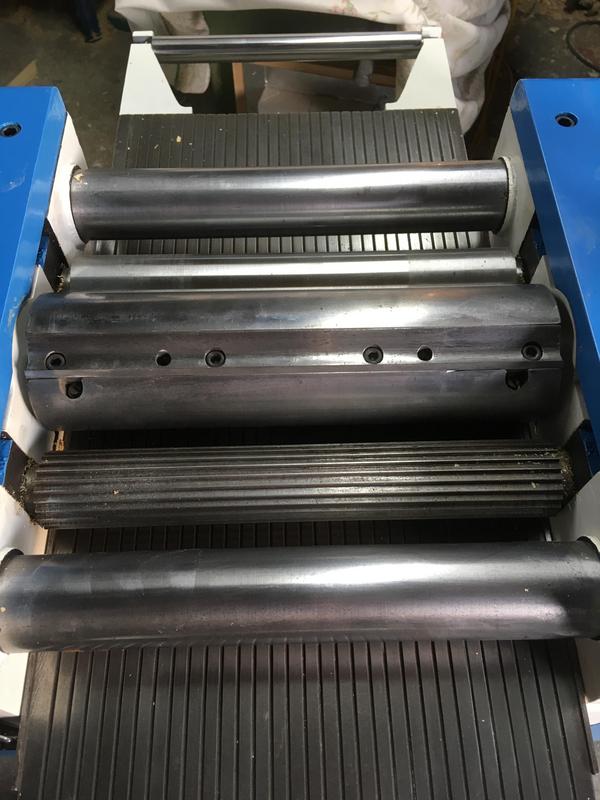Deadeye
Established Member
Well, quite a lot as it turns out.
One stuck bolt currently stands between me and I think quite a good rescue of a badly rusted up thicknesser.
It's a slotted machine screw for setting blade height in the cutter block. Two of its peers came out relatively easily, the third put up a hell of a fight but succumbed following Trevanion's advice. The final one is beating me.
I've tried all manner of combinations of soaking in penetrating oil, heating the block and freezingn the bolt, tapping it sharply to break the bond, soaking in citrate, trying to tighten before loosening, and speaking to it sternly, all to no avail. I also enhanced the slot with a dremel and diamond wheel as it was getting rounded by my failures - any more force will shear the screwdriver or the bolt I think!
Any final ideas before I try to accurately drill out a hardened bolt from an off-centre position on a circular block? They're 1/4" and only in about 3/8ths, but rotted solidly in place.
If I do have to drill it out, I was hoping to start small and only go up to the inner diameter so I can scrape out the thread and reuse. Is this remotely feasible?
One stuck bolt currently stands between me and I think quite a good rescue of a badly rusted up thicknesser.
It's a slotted machine screw for setting blade height in the cutter block. Two of its peers came out relatively easily, the third put up a hell of a fight but succumbed following Trevanion's advice. The final one is beating me.
I've tried all manner of combinations of soaking in penetrating oil, heating the block and freezingn the bolt, tapping it sharply to break the bond, soaking in citrate, trying to tighten before loosening, and speaking to it sternly, all to no avail. I also enhanced the slot with a dremel and diamond wheel as it was getting rounded by my failures - any more force will shear the screwdriver or the bolt I think!
Any final ideas before I try to accurately drill out a hardened bolt from an off-centre position on a circular block? They're 1/4" and only in about 3/8ths, but rotted solidly in place.
If I do have to drill it out, I was hoping to start small and only go up to the inner diameter so I can scrape out the thread and reuse. Is this remotely feasible?


































